by Lorri | Sep 26, 2012 | UnCorked
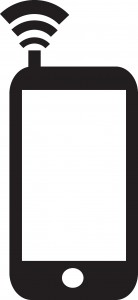 There has never been a more opportune time for wine enthusiasts. In this digital age, with the hundreds of applications for smart phones and tablets available, it’s as if we all can have a team of experts with us at the touch of our screen. Following are a few of my favorites.
There has never been a more opportune time for wine enthusiasts. In this digital age, with the hundreds of applications for smart phones and tablets available, it’s as if we all can have a team of experts with us at the touch of our screen. Following are a few of my favorites.
Looking for the perfect wine and food match? The Pair It! app ($4.99) is a fun and comprehensive food and wine pairing guide featuring more than 20,000 pairings. It offers practical guidelines and suggestions to match more than 180 varietals with 1,000 food items. You can either take advantage of expert suggestions by chef Bruce Riezenman, the brains behind its creation, or use the “swirl and shake” slot machine-style feature as your guide. The app includes a searchable database and allows users to save their favorite pairings.
For those looking for information on more than 1,000,000 bottles of wine Cor.kz’s “Cellar Tracker” feature is the app for you ($2.99). Wines can be searched by varietal or region, or the bar code scanner on the app. When you find a wine you like, it allows you to add and organize by regions, ratings, best rated, drink sooner rather than later and those you have consumed. The app also features a tab with wine choices you can build on from your comparison. Cor.kz is helpful for those starting out and exploring wine as well as experts seeking detailed information on rare and exotic bottles.
Snooth Wine Pro ($4.99) represents the next generation of app technology, using image recognition. Take a photo of a wine label and match it to a vintner in the wine database. Even if you don’t know what wine you are looking for it has a browsing feature that helps you not only find wines by price, taste preference and regions but a geographic search feature of wine stores near you. Another facet is a “virtual cellar” wine inventory management system that allows you to keep track of wines you have reviewed and bought.
The Wine Enthusiast Guide ($3.99) app is updated each month with expert reviews. With a few taps you can access up-to-date details, reviews, ratings and retail prices for more than 64,000 wines worldwide. It also offers a vintage chart, glossary and wine appreciation course giving you an extra edge in your wine knowledge.
The AG Wine Guide ($1.99) app is great for wine drinkers who don’t know the specifics about wines they are looking to drink but have a sense of what they enjoy. It is a rich resource for learning about appellations, varietals, food pairings and wine styles. It gives you choices related to your preferences. For example, when searching for red wines, “Bold and full bodied,” “smooth and medium-bodied” or “light and subtle” with detailed descriptions of each.
by Lorri | Sep 19, 2012 | UnCorked
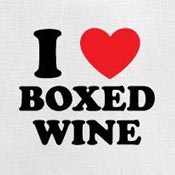 Despite the public’s negative reactions at the mere mention of boxed wine, one thing is undeniable: it’s a brilliant idea. Known in the industry as the bag-in-a-box, the packaging solves a common problem that troubled winemakers for centuries. Whether in an urn, cask or bottle, no matter how these are sealed, air attacks and degrades the wine, making an opened container’s life only a few days long.
Despite the public’s negative reactions at the mere mention of boxed wine, one thing is undeniable: it’s a brilliant idea. Known in the industry as the bag-in-a-box, the packaging solves a common problem that troubled winemakers for centuries. Whether in an urn, cask or bottle, no matter how these are sealed, air attacks and degrades the wine, making an opened container’s life only a few days long.
In 1965, Australian winemaker Thomas Angove was not seeking to change the image of wine but looking for a more practical and cost effective method for wine packaging. His invention evolved into today’s boxed wine. The box has a soft, flexible bag inside that is filled with wine and sealed without air. As the wine is drawn out the flexible bag collapses and protects the remaining wine from airspoilage. Placing the bag inside a box allows for space efficiency and ease of transportation.
You can’t deny it is a brilliant invention, yet image issues and the myth that boxed wine is inferior have prevented people from embracing it, much like our thoughts on screw-top wines just 10 years ago. In the early days, boxed wine concerns were founded, with an enormous amount of poor-quality wines being put into a box. But today more vintners areembracing the trend, and excellent quality boxed wines are resulting.
These are a few I have tasted and believe give the consumer a fresh new look at boxed wines.
- 2011 Lindeman’s Pinot Grigio, Australia (about $20 retail)
- 2011 Big House Red, California (about $22 retail)
- 2011 Silver Birch Sauvignon Blanc, New Zealand (about $20 retail)
- 2011 Black Box Cabernet Sauvignon, California (about $24 retail)
- 2011 Vina Borgia Garnacha, Spain (about $19 retail)
- 2011 Folonari Pinot Grigio, Italy (about $21 retail)
- 2011 Bota Box Chardonnay, California (about $20retail)
by Lorri | Sep 12, 2012 | UnCorked
 It’s charity fundraiser season, the time of year when wine enthusiasts have opportunities to match their passion for wine with helping their community.
It’s charity fundraiser season, the time of year when wine enthusiasts have opportunities to match their passion for wine with helping their community.
Each year I find a few new pointers to add to our experience.
To spit or not to spit?
If you take any words of advice about events that explore hundreds of wines at one time, it would be to spit and spit often. Professional wine tasters discovered long ago that if you swallow every wine, by the time you reach sample No. 10 or so, you no longer have a professional opinion. Their discovery has made it very acceptable for anyone to spit.
Swallowing isn’t necessary to taste the wine fully. If you leave the wine in your mouth for eight to 10 seconds, you will taste the wine without the effects of the alcohol. Your goal for the large event is a tasting opportunity, not drinking everything in sight.
Spitting is part of the tasting process and not a social faux pas, so no need to be intimidated as you push your way through to the bucket.
Food and wine bliss
Many events will include the exploration of food and wine, either over a sit-down dinner or a casual walkaround. Take full advantage of this exploration of paradise.
Consider what it would take for you to re-create some of these tasting situations — hundreds of dollars worth of wines, several personal executive chefs and, more importantly, the cleanup. Savor the chance to make your own conclusions about wine and food pairings.
Not just another party
From my years of supporting and attending charity wine events, I know many times we forget sponsors behind the scenes supplying these tasting opportunities to our community. Each event isn’t just a few cases of wine, beer and food trays dropped off, but months of detailed planning by the distributors, retailers, restaurants, chefs and volunteers.
Take a moment to thank them for giving the community a tasting bonanza each year.
If you are looking to add tasting opportunities to your calendar, here are a few events:
- Wildwood Wine and Food Festival, Friday, Wildwood Reserve Dinner, Sept. 28, for tickets call (501) 821-7275.
- Arkansas Hospitality Association Culinary Classic, Tuesday, for more information call (501) 376-2323.
- Taste of the Town, Sept. 27, proceeds support North Little Rock Chamber of Commerce educational programs, for more information call (501) 372-5959.
- The Festival of Wines, Oct. 4, benefiting the American Heart Association, for tickets call (501) 379-1198.
- Links and Drinks, Sept. 27, benefiting Potluck, a food rescue group, for tickets call (501) 371-0303.
- Uncorked — The Mad Scientist Mash at the Museum of Discovery, Oct. 18, for tickets call (501) 396-7050.
by Lorri | Sep 5, 2012 | UnCorked
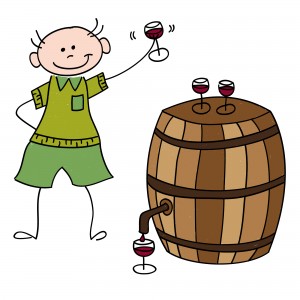 I had a friend a few days ago ask if I thought she had what it takes to be a wine taster. The answer to her and every other person is yes, yes and yes. If you drink wine you already are a wine taster.
I had a friend a few days ago ask if I thought she had what it takes to be a wine taster. The answer to her and every other person is yes, yes and yes. If you drink wine you already are a wine taster.
The art of tasting wine is no different from tasting any other flavors familiar to your taste buds. If you were asked to taste coffee versus toothpaste, you could do it blindfolded as your familiarity would guide you, and you’d be able to identify different flavors (peppermint, cinnamon, burnt toast).
The same is true for wine except that the variances are more subtle. Practice makes one better but not always perfect. It’s a vast subject with thousands of variables at any given time. The most important aspect of tasting wine for the consumer boils down to, do you like it or not? However, a little education and experience can help you explain why you’ve reached a conclusion.
Wine-tasting groups, which promote discussion and save money, can be an enjoyable way to further one’s wine-tasting skills. Below, I’ve listed a few guidelines for setting up a group.
Set a clear start time for guests to adhere to, because this is one party that’s difficult to restart if someone arrives late.
Select a theme that focuses on a single grape variety, region or price.
The setup should be simple: all-purpose wineglasses, water glasses, a tasting sheet for notes and spittoons. Food is not a necessity but neutral crackers and bread refresh the palate between wines of varying styles.
Taste the wines from dry to sweet for whites and light bodied to full-bodied for reds. Good lighting is essential for visually experiencing the wine.
Try to create a neutral space for the tasting. Strong odors such as air-fresheners, smoke, scented candles, perfume and kitchen aromas can play havoc on taste buds and sense of smell.
Speak up and talk about the wine. For some reason, wine tasting makes people sheepish. If a person smells aromas of strawberries and you smell figs don’t simply nod, be sure to speak up to keep the discussion moving forward. The different perceptions are part of the fun.
Last but not least, the wines. Consult with your favorite retailer for recommendations on quality and price. If you’re having a potluck-style tasting, with each guest contributing a bottle, be sure everyone stays with the theme to get the most out of the tasting group.
by Lorri | Aug 29, 2012 | UnCorked
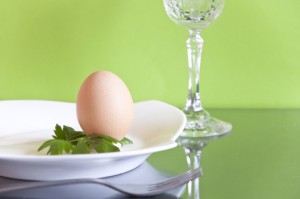 I am not suggesting you replace orange juice with cabernet for your morning eggsand-bacon pairing but eggs can be a surprisingly good match with wine. Since my father-in-law began his new adventure – the ever growing and grand backyard chicken mansion – we’ve been blessed with an abundance of wonderful, fresh, organic eggs, thus the immediacy of this topic.
I am not suggesting you replace orange juice with cabernet for your morning eggsand-bacon pairing but eggs can be a surprisingly good match with wine. Since my father-in-law began his new adventure – the ever growing and grand backyard chicken mansion – we’ve been blessed with an abundance of wonderful, fresh, organic eggs, thus the immediacy of this topic.
Eggs are not as difficult to pair with wine as some experts would have us believe. They are a fundamental ingredient in many cuisines around the world. It’s the conventional wisdom of the past that they didn’t match – the runny yolks supposedly destroyed the texture and flavors of wine. Just like with all wine and food pairings, keep in mind the weight and other ingredients being added to the dish.
The scrambled egg can be much more than just fluffy. If you are having simple scrambled eggs with no added flavors, a sparkling wine or unoaked chardonnay is a safe bet. A favorite of mine is adding smoked salmon, which makes a Blanc de Blanc Champagne or sparkling wine ideal.
THE VALUE
- 2011 Wishing Tree Unoaked Chardonnay, Australia (about $13 retail)
THE SPLURGE
- 2010 Gruet Brut Reserve Blanc de Blanc, New Mexico (about $26 retail)
For a heartier dish, such aseggs Benedict complete with hollandaise sauce, a fuller bodied chardonnay is a good match.
THE VALUE
- 2011 Cupcake Chardonnay, California (about $12 retail)
THE SPLURGE
- 2011 B.R. Cohn Chardonnay Los Carneros, California (about $28 retail)
Omelets and quiches with ham or bacon have the flavor and weight to compete with a light-bodied red wine such as pinot noir or rose.
THE VALUE
- 2010 Concannon Pinot Noir, California (about $12 retail)
THE SPLURGE
- 2010 Villa Maria Private Bin Pinot Noir, New Zealand (about $22 retail)
by Lorri | Aug 22, 2012 | UnCorked
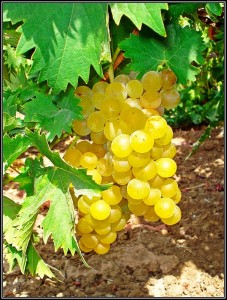 It’s not often that trendwatching is part of wine drinking, but over the past year moscato has hit a stride with consumers. The trend is not only that sales continue to grow and grow, but also that the wine may quickly replace American’s love affair with white zinfandel.
It’s not often that trendwatching is part of wine drinking, but over the past year moscato has hit a stride with consumers. The trend is not only that sales continue to grow and grow, but also that the wine may quickly replace American’s love affair with white zinfandel.
I know it’s not a wine likely to receive universal approval by wine critics with scores and cellar notes, but its sweet, light, bubbly style just seems to work. Moscato is known for its surprising perfume-like fragrance. Even as a low-alcohol content, straightforward wine, the aromatics in most moscato are amazing – tropical fruits, peach, orange blossom and even honeysuckle.
Moscato should be enjoyed when it’s young and fresh. It needs to be served chilled and it pairs well with an array of foods, from brunch to dessert. Some of my favorite matches are apple desserts, summer salads, peach cobbler, fresh berries, lemon breads and quiche. With its versatility and balance of sweetness and acidity, it’s also an ideal starter wine for summer parties, weddings or even just sipping on the deck.
THE VALUES
- 2011 Ecco Domani Italia Moscato, Italy (about $15 retail)
- 2011 Bella Sera Moscato, Italy (about $10 retail)
- 2011 Barefoot Moscato, California (about $10 retail)
- 2011 Candoni Moscato d’Italia, Italy (about $14 retail)
THE SPLURGES
- 2011 St. Supery Moscato, California (about $22 retail)
- 2011 Marco Negri Moscato d’Asti, Italy (about $22 retail)
 There has never been a more opportune time for wine enthusiasts. In this digital age, with the hundreds of applications for smart phones and tablets available, it’s as if we all can have a team of experts with us at the touch of our screen. Following are a few of my favorites.
There has never been a more opportune time for wine enthusiasts. In this digital age, with the hundreds of applications for smart phones and tablets available, it’s as if we all can have a team of experts with us at the touch of our screen. Following are a few of my favorites. Despite the public’s negative reactions at the mere mention of boxed wine, one thing is undeniable: it’s a brilliant idea. Known in the industry as the bag-in-a-box, the packaging solves a common problem that troubled winemakers for centuries. Whether in an urn, cask or bottle, no matter how these are sealed, air attacks and degrades the wine, making an opened container’s life only a few days long.
Despite the public’s negative reactions at the mere mention of boxed wine, one thing is undeniable: it’s a brilliant idea. Known in the industry as the bag-in-a-box, the packaging solves a common problem that troubled winemakers for centuries. Whether in an urn, cask or bottle, no matter how these are sealed, air attacks and degrades the wine, making an opened container’s life only a few days long. It’s charity fundraiser season, the time of year when wine enthusiasts have opportunities to match their passion for wine with helping their community.
It’s charity fundraiser season, the time of year when wine enthusiasts have opportunities to match their passion for wine with helping their community. I had a friend a few days ago ask if I thought she had what it takes to be a wine taster. The answer to her and every other person is yes, yes and yes. If you drink wine you already are a wine taster.
I had a friend a few days ago ask if I thought she had what it takes to be a wine taster. The answer to her and every other person is yes, yes and yes. If you drink wine you already are a wine taster. I am not suggesting you replace orange juice with cabernet for your morning eggsand-bacon pairing but eggs can be a surprisingly good match with wine. Since my father-in-law began his new adventure – the ever growing and grand backyard chicken mansion – we’ve been blessed with an abundance of wonderful, fresh, organic eggs, thus the immediacy of this topic.
I am not suggesting you replace orange juice with cabernet for your morning eggsand-bacon pairing but eggs can be a surprisingly good match with wine. Since my father-in-law began his new adventure – the ever growing and grand backyard chicken mansion – we’ve been blessed with an abundance of wonderful, fresh, organic eggs, thus the immediacy of this topic. It’s not often that trendwatching is part of wine drinking, but over the past year moscato has hit a stride with consumers. The trend is not only that sales continue to grow and grow, but also that the wine may quickly replace American’s love affair with white zinfandel.
It’s not often that trendwatching is part of wine drinking, but over the past year moscato has hit a stride with consumers. The trend is not only that sales continue to grow and grow, but also that the wine may quickly replace American’s love affair with white zinfandel.